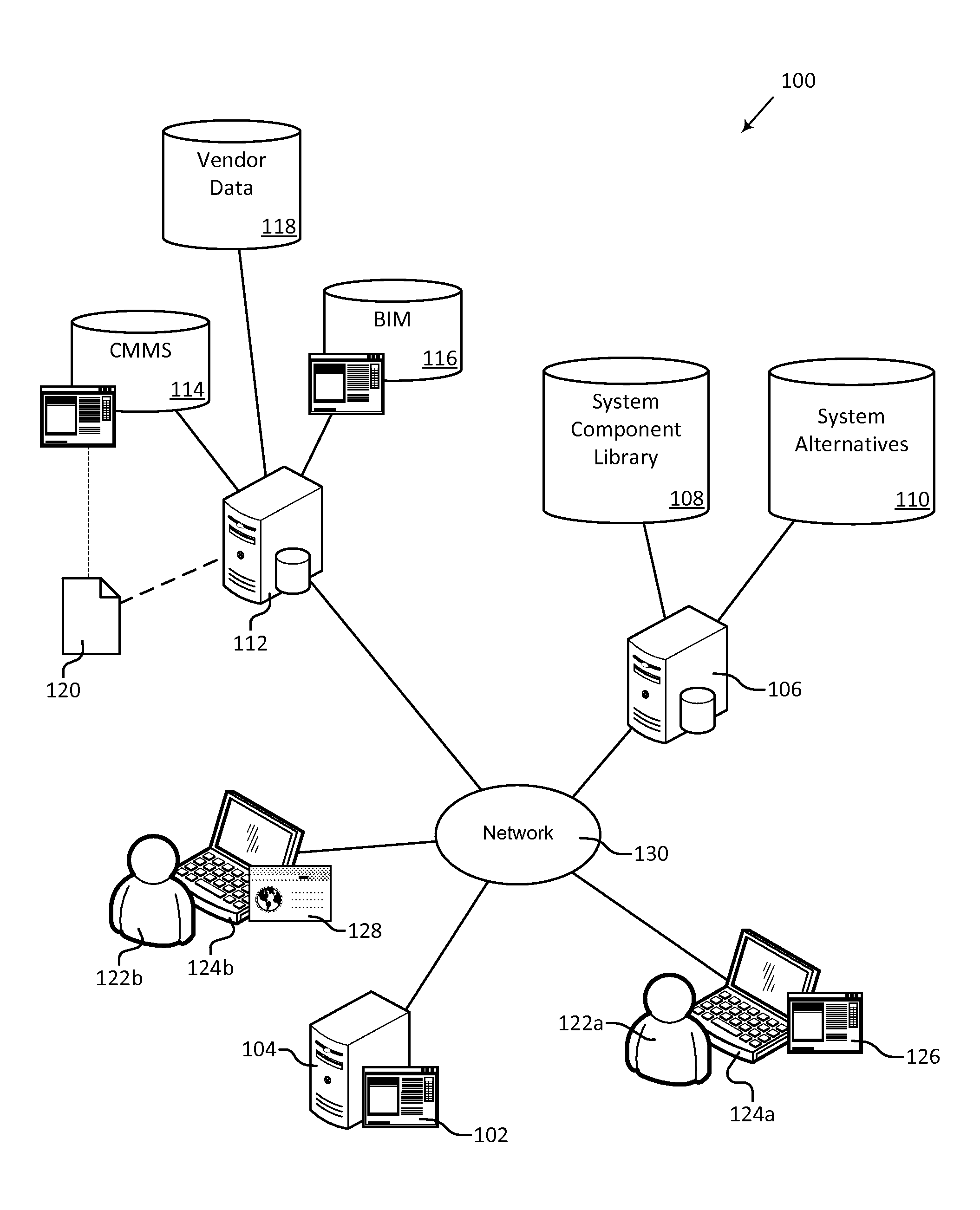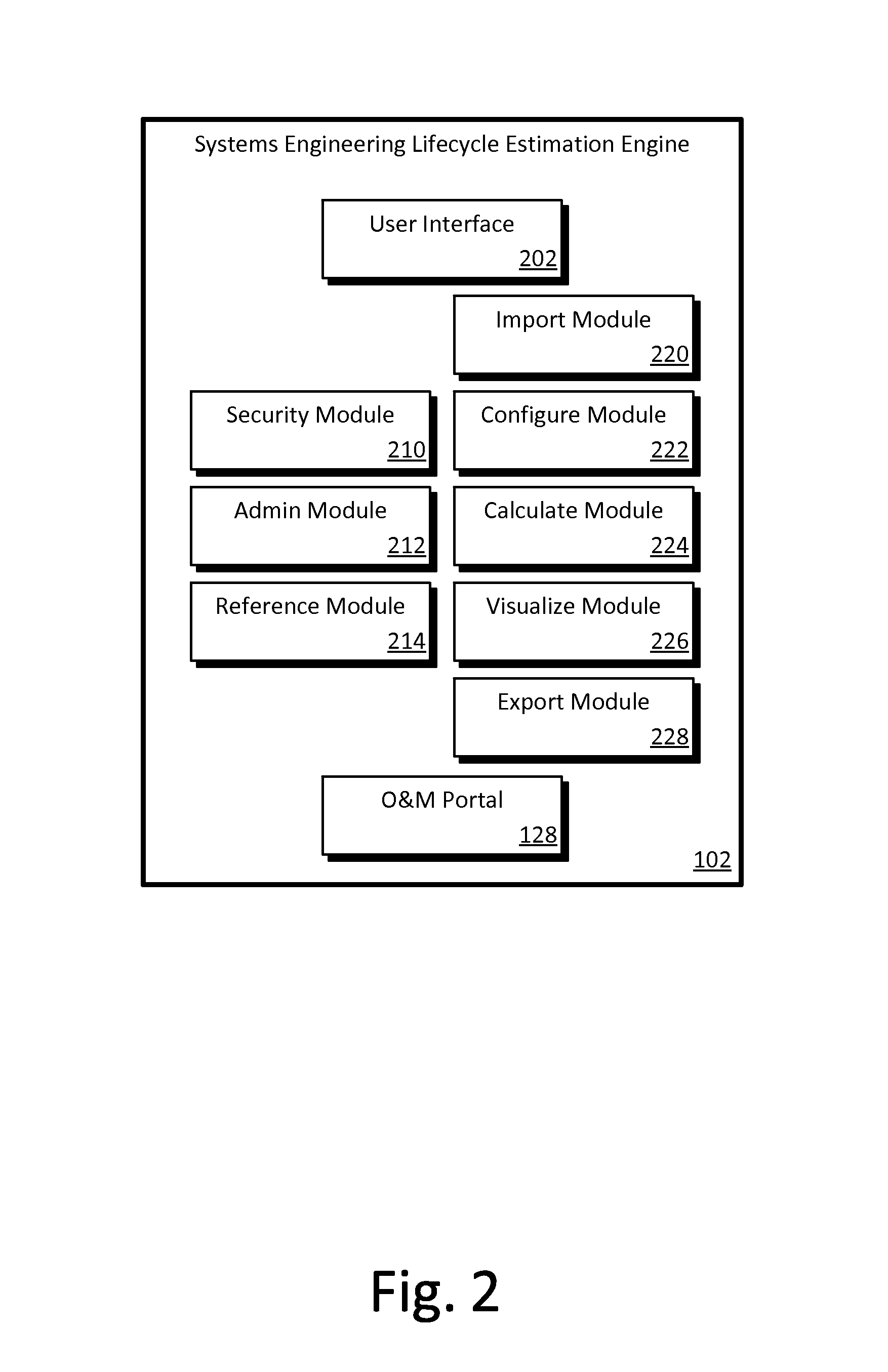Systems Engineering Lifecycle Cost Estimation
- Summary
- Abstract
- Description
- Claims
- Application Information
AI Technical Summary
Benefits of technology
Problems solved by technology
Method used
Image
Examples
Embodiment Construction
[0026]An engineering lifecycle cost estimation system, or EDGE System, is described herein and illustrated in the accompanying figures. The engineering lifecycle cost estimation system allows users to make engineering decisions based on graded evaluations of lifecycle costs (“EDGE”). Embodiments of the EDGE System allow users to analyze major design options during initial system development, optimize system details during final system development and construction, and manage system operation and maintenance over the life of the system. Embodiments of the EDGE System allow users to define a system in terms of the components included in the system, define alternative systems, calculate lifecycle costs for a system or component, and visualize the lifecycle costs, timelines, and other information for systems and components. The visualizations allow users to easily analyze and compare alternative systems or components and make informed decisions. A limited access portal allows clients to...
PUM
 Login to view more
Login to view more Abstract
Description
Claims
Application Information
 Login to view more
Login to view more - R&D Engineer
- R&D Manager
- IP Professional
- Industry Leading Data Capabilities
- Powerful AI technology
- Patent DNA Extraction
Browse by: Latest US Patents, China's latest patents, Technical Efficacy Thesaurus, Application Domain, Technology Topic.
© 2024 PatSnap. All rights reserved.Legal|Privacy policy|Modern Slavery Act Transparency Statement|Sitemap



